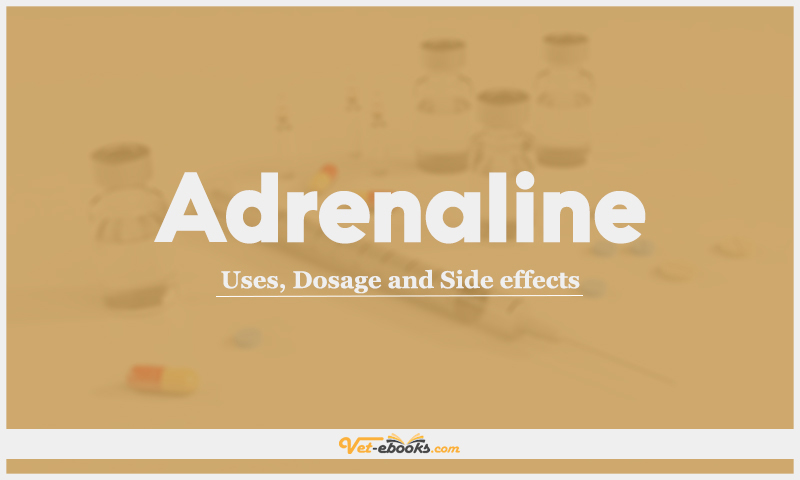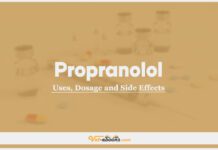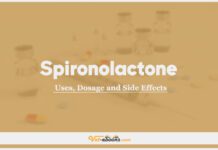Adrenaline: Uses, Dosage and Side Effects

Overview
- Adrenaline exerts its effects via alpha-1, -2 and beta-1 and -2 adrenoreceptors.
- The duration of action of adrenaline is short (2–5 min).
- Adrenaline’s effects change depending on the dose. Low-dose infusions mostly have beta-adrenergic effects (increases in cardiac output, myocardial oxygen consumption, decreased threshold for arrhythmias, peripheral vasodilation, and a decrease in diastolic blood pressure).
- At high doses alpha-1 effects predominate, causing a rise in systemic vascular resistance, diverting blood to the central organs; however, this may improve cardiac output and blood flow.
- Respiratory effects include bronchodilation and an increase in pulmonary vascular resistance. Renal blood flow is moderately decreased.
Uses of Adrenaline (Epinephrine)
- Status asthmaticus, cardiac resuscitation, and mitigating the consequences of histamine release in severe anaphylactoid reactions.
- The ophthalmic preparation is used in open-angle glaucoma.
Dose of Adrenaline (Epinephrine) in Dogs and Cats
Dogs, Cats:
- Cardiopulmonary arrest (CPA):
10 μg (micrograms)/kg of a 1:1000 solution (1000 μg/ml) given i.v. or intraosseously every 3–5 min. High dose epinephrine (0.1 mg/kg i.v.) maybe considered after prolonged CPA. - Bronchoconstriction and anaphylaxis:
• 10 μg (micrograms)/kg of a 1:1000 solution (1000 μg/ml) i.v. or i.m. The i.v. route is preferred if hypotension accompanies an anaphylactoid reaction.
Drug Dosage Calculator
You Should Give:
Side Effects of Adrenaline (Epinephrine) in Dogs and Cats
- Produces arrhythmias including ventricular fibrillation because it increases myocardial oxygen demand.
- Other adverse effects include tachycardia, dry mouth and cold extremities.
- Repeated injections can cause necrosis at the injection site.
Contraindications of Adrenaline (Epinephrine) in Dogs and Cats
- The use of human adrenaline pen injections is not recommended (doses in such pens are usually too small to be effective).
- Do not administer adrenaline directly into the myocardium because of the risk of arrhythmias.
Some Notes:
- Beware of using in animals with diabetes mellitus (monitor blood glucose concentration),
hypertension or hyperthyroidism. - Use with caution in hypovolaemic animals.
- Overdosage can be fatal so check dose, particularly in small patients.
- Intracardiac injection is not recommended.
- The effects of adrenaline may be potentiated by antihistamines and thyroxine.
- Propranolol may block the beta effects of adrenaline, thus facilitating an increase in blood pressure.
- When adrenaline is used with drugs that sensitize the myocardium (e.g. halothane, high doses of digoxin) monitor for signs of arrhythmias.
- Hypertension may result if adrenaline is used with oxytocic agents.
Tip
Do You Want To Increase Your Veterinary Knowledge and Practical Skills?
You Can Now Browse and Download +3000 Books For Veterinary Professionals & Students Online.
Download Veterinary Books












